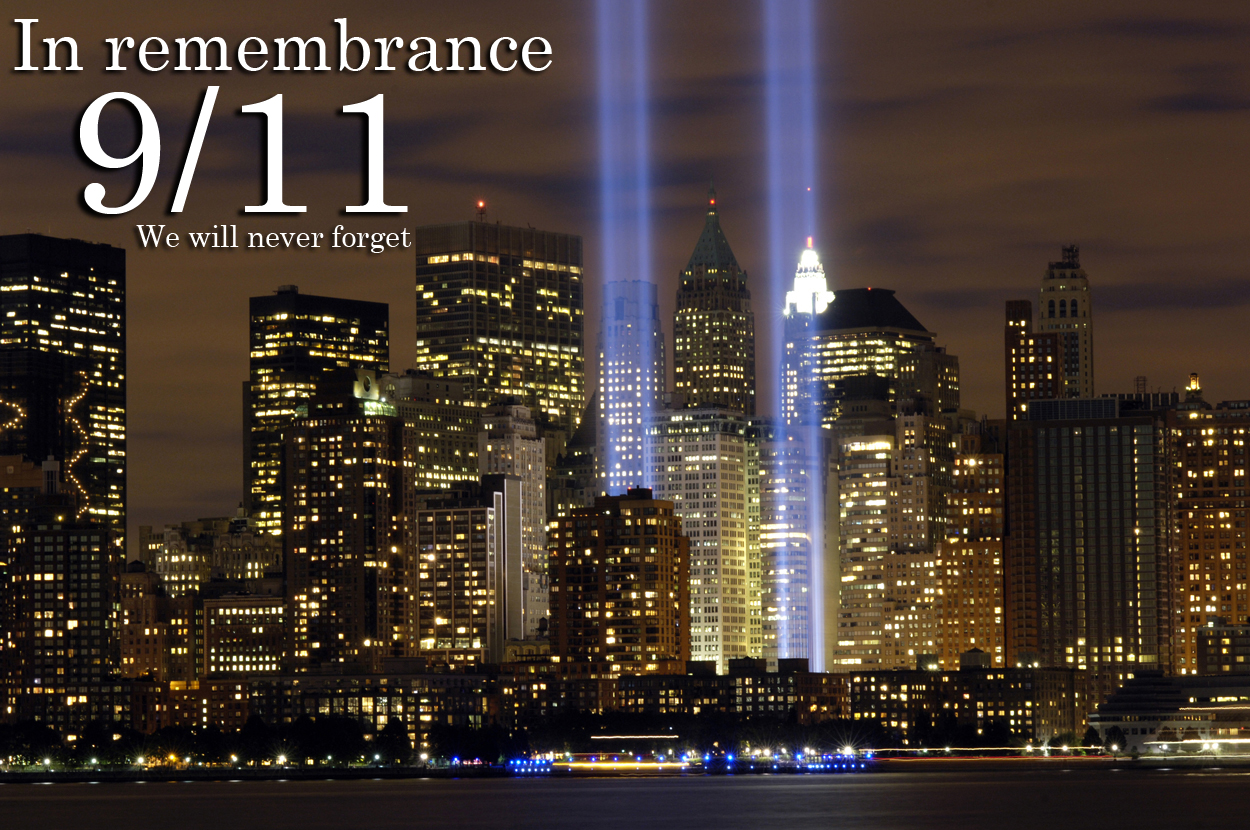
On Wednesday, September 11, 2019, Americans will commemorate the 18th anniversary of one of the most tragic days in modern US history. On September 11, 2001, 19 members of the Islamic extremist organization Al Qaeda conducted a series of brutal, well-orchestrated attacks on American soil. In addition to cutting short the lives of 2,977 innocent people, the tragedy also set in motion events that would change the course of life both in the US and worldwide.
Preparations for the unprovoked and unprecedented act of violence began early on September 11, 2001. The armed terrorists, split into four groups — each with a trained pilot — boarded four commercial airplanes masquerading as passengers. Since airport security, as we know it today was non-existent, the weapons or bombs they were carrying went undetected. The flights — United Flight 93 from New Jersey, American Flight 77 from Washington, DC, and United Flight 175 and American Flight 11 from Boston — were all heading across the country, either to Los Angeles or to San Francisco. They, therefore, had enough fuel to cause a large amount of damage.

Though the passengers and crew aboard the four fateful flights probably suspected something was amiss shortly after take off, the world remained blissfully unaware of the horrific events that were about to unfold. The first external sign that something had gone awry came shortly after American Flight 11 departed from Boston's Logan Airport at 8:00 AM (EST). Instead of heading west to Los Angeles, the airplane was seen coming directly towards New York's City's tallest structures — the World Trade Center’s Twin Towers. Those witnessing the scene from the ground thought the airplane would change course before it got close to the buildings. That, however, never happened. At 8:46 AM (EST), the Boeing 767 crashed into the North Twin Tower, killing everyone on board as well as the people on the six floors it impacted.
As experts debated if the "accident" had been caused by a pilot error or an airplane malfunction, United Flight 175, also destined for Los Angeles, was seen heading in the same direction as American Flight 11. At 9:03 AM (EST), the airplane crashed into the South Twin Tower, creating a massive hole from the 77th to the 85th floors. Shortly after, at 9:37 AM (EST), American Flight 77 hit the Pentagon building in Arlington, Virginia. About a half-hour later, at 10.03 AM (EST), United Flight 93 crash-landed in an empty field on the outskirts of Shanksville, Pennsylvania. By then, it was evident that the US was undergoing a series of deadly terrorist attacks.

Though the airplane ambush was over, the nightmare was just beginning, especially for those inside New York City’s Twin Towers. The intense fires, caused by the fully-fueled planes, weakened the steel support trusses that held the 110-floor structures in place. This, together with the impact of the airplanes, caused both towers to crumble into giant heaps of cement and steel within a few hours after the terrorist attacks.
While most of the estimated 16,000 to 18,000 people in the World Trade Center complex were safely evacuated, many first responders — firefighters, paramedics, and police — who rushed in to help those injured or trapped did not make it out. Though the Pentagon survived the attack, 125 employees, as well as everyone on the airplane, died.

Two thousand nine hundred seventy-seven innocent people from 93 nations lost their lives on that tragic Tuesday. The death toll would have been even higher if the brave passengers and crew members of United Flight 93 had not overpowered the hijackers and diverted the flight, which was destined to hit the US Capitol building in Washington, DC. Though none survived the crash, their courage saved the country from an even bigger catastrophe.
Following the tragedy, there was much discussion about whether to rebuild the towers or turn the site into a memorial for the lost lives. After much deliberation, US officials decided that both were necessary — one to remind the world that Americans would not be intimidated by cowardly actions, and the other to ensure that the 9/11 victims would never be forgotten.

Today, "Ground Zero,” as it is often called, boasts four new towers, including the gleaming One World Trade Center, or "Freedom Tower.” Standing at a symbolic 1,776 feet high — the year the US Declaration of Independence was signed — it is the tallest building in New York City and the entire western hemisphere. Adjacent to the Freedom Tower lies an elegant memorial featuring twin reflecting pools with the names of all the victims etched into the bronze-paneled edges. The National September 11 museum, located alongside, is built where the towers fell. It features several artifacts from the tragic day, including the steel beams from the two collapsed buildings.
In Shanksville, visitors can view exhibits commemorating the 9/11 tragedy and hear playbacks of messages left by the passengers of United Flight 93 to their loved ones before it crashed. The Pentagon has created 184 illuminated stainless steel benches to honor the 125 employees and 59 crew and passengers of American Flight 77 who died.

The 9/11 attacks also led to the start of the “Global War on Terrorism,” which continues to this day. The 18-year conflict in Afghanistan, the longest war in US history, has claimed the lives of thousands of US military personnel and cost American taxpayers billions of dollars. This September 11, or Patriot Day as it is now called, take time to remember the thousands of people who have lost their lives in this ongoing fight against terror.
Resources: Thoughtco,com,911memorial.org, thebalance.com,wikipedia.org
